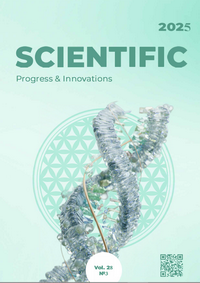Testing the acaricidal activity of modern chemical agents against Dermanyssus gallinae mites in laboratory conditions
DOI:
https://doi.org/10.31210/spi2025.28.03.29Keywords:
parasitology, dermanyssiosis, chickens, Dermanyssus gallinae, acaricidal activity, preparations, in vitroAbstract
Various living systems are open and the course of their physiological and biochemical processes depends on many environmental factors that can become stressors for them. It is known that stress develops under the influence of extraordinary strength irritants. A special category of stress factors are biological ones, where parasitic agents are one of the key problems in poultry farming. A particular threat to the poultry industry is the Dermanyssus gallinae mite, which causes toxic and anemic syndromes in chickens, exhaustion, itching, loss of feathering, reduced productivity, and sometimes death, especially in young poultry. The measures to combat and prevent dermanyssiosis are carried out mainly using acaricidal agents, the effectiveness of which is not always sufficient to improve poultry farming and maintain veterinary well-being. The objective of the research was to establish the acaricidal activity of domestically produced agents against D. gallinae imago mites in laboratory conditions. The mites were obtained from mini-traps placed in poultry houses that were not favorable for dermanyssiosis. Such chemical agents were tested – “Ectosan emulsion” (active ingredients – piperonyl butoxide, alphacypermethrine) and “Ectosan powder” (active ingredient – alphacypermethrine). The results of their acaricidal action were recorded after 30 min, 1, 3, 24, 48 and 72 hours. The conducted studies showed that “Ectosan emulsion” acaricidal preparation was more effective against dermanyssus mites compared to “Ectosan powder” preparation. When testing “Ectosan emulsion”, the death of mites began after 1 hour and only at its dilution of 1 : 500 and 1: 550, where the mortality made 10 and 4.3 %, respectively. 3 hours after treating mites with “Ectosan emulsion” at dilutions of 1: 500, 1: 550 and 1: 650, the mortality of mites made 44.3 %, 27.7 % and 16.7 %, respectively. After 24, 48 and 72 hours, the death of mites reached 100.0 %. When testing “Ectosan powder “, the death of mites began only after 72 hours and turned out to be very low – 9.0 %. The obtained results of the conducted experiments allow us to recommend “Ectosan emulsion” preparation for further testing in production conditions in order to identify its acaricidal efficacy for chicken dermanyssiosis.
Downloads
Published
How to Cite
Issue
Section
License
Copyright (c) 2025 Scientific Progress & Innovations

This work is licensed under a Creative Commons Attribution 4.0 International License.

 Creative Commons Attribution 4.0 International Licens
Creative Commons Attribution 4.0 International Licens